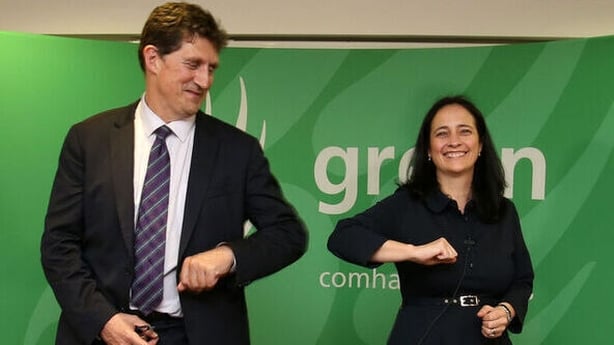Eamon Ryan was dubbed a "conviction politician" according to both his admirers and his detractors.
He has departed national politics on his own terms, after first taking office over 25 years ago.
Ryan was co-opted to John Gormley's Dublin City Council seat in 1998 and one year later, he topped the poll in Rathmines.
In 2002, he was part of a nascent Green wave when the party successfully got six TDs into the Dáil. He represented the former constituency of Dublin South.
Two years later, he was touted as a Green candidate for the presidency but withdrew before the contest.
In 2007, he was again elected to the Dáil - this time in the neighbouring constituency of Dublin South East (now known as Dublin Bay South).
The Greens did the "deal with the devil" as one of their own called it and joined the Fianna Fáil-led government, also propped up by what was left of the Progressive Democrats as well as some independents.
Both himself and John Gormley got seats at the cabinet table with Mr Ryan becoming minister for communications under taoiseach Bertie Ahern.
That coalition ended in complete disarray following the collapse of the public finances and the bailout.
The Green Party bungled its exit from government and was repaid at the ballot box with electoral wipeout when all its TDs lost their seats leaving it with just three councillors.
Eamon Ryan took over the leadership at that low point in the Green Party's history, rebuilding with limited support or funding.
In 2016, both he and Catherine Martin were elected as part of a small swing back to the Greens.

In the 2020 general election, the party’s Dáil ranks swelled to 12 TDs on the back of a Green wave with climate issues to the fore.
When Fianna Fáil and Fine Gael managed to hammer out an agreement to join forces, they looked to attract the Greens to secure a government majority.
The argument was that the urgency of the climate crisis required that the Green Party could not sit on the sidelines.
But some frontbench members argued for a national unity government to get through the challenge of Covid with the lingering memory of its 2011 routing.
Eamon Ryan set out a key red line for negotiations - a 7% reduction in annual greenhouse gas emissions.
Against much internal resistance, he persuaded the party to go back into coalition securing the support of three-quarters of the membership.
Eamon Ryan took over several portfolios - environment, climate, communications and transport.
Big successes followed - a climate action plan underpinned by legally binding emissions targets.
But Eamon Ryan also became a lightning rod for discontent with Green policies and he was a regular punchbag for rural independents.
Following the electoral hammering received by the Greens in the local and European elections, he has now decided to step aside from the leadership and will not run again for the Dáil.
After 13 years at the helm, Eamon Ryan leaves the Green Party with many tangible wins in government.
However, the Green Party also has an image problem for some voters, that has been exploited by others - something his successor will need to tackle.
Eamon Ryan said he will continue his work for climate justice in other ways.
His profile has been growing abroad and he has led negotiations for the European Union at the last two COP meetings while also chairing the International Energy Agency.
For now though, the electoral prospects for Green politicians look tougher in Ireland and elsewhere and as Eamon Ryan said: "We are into a new political cycle."






